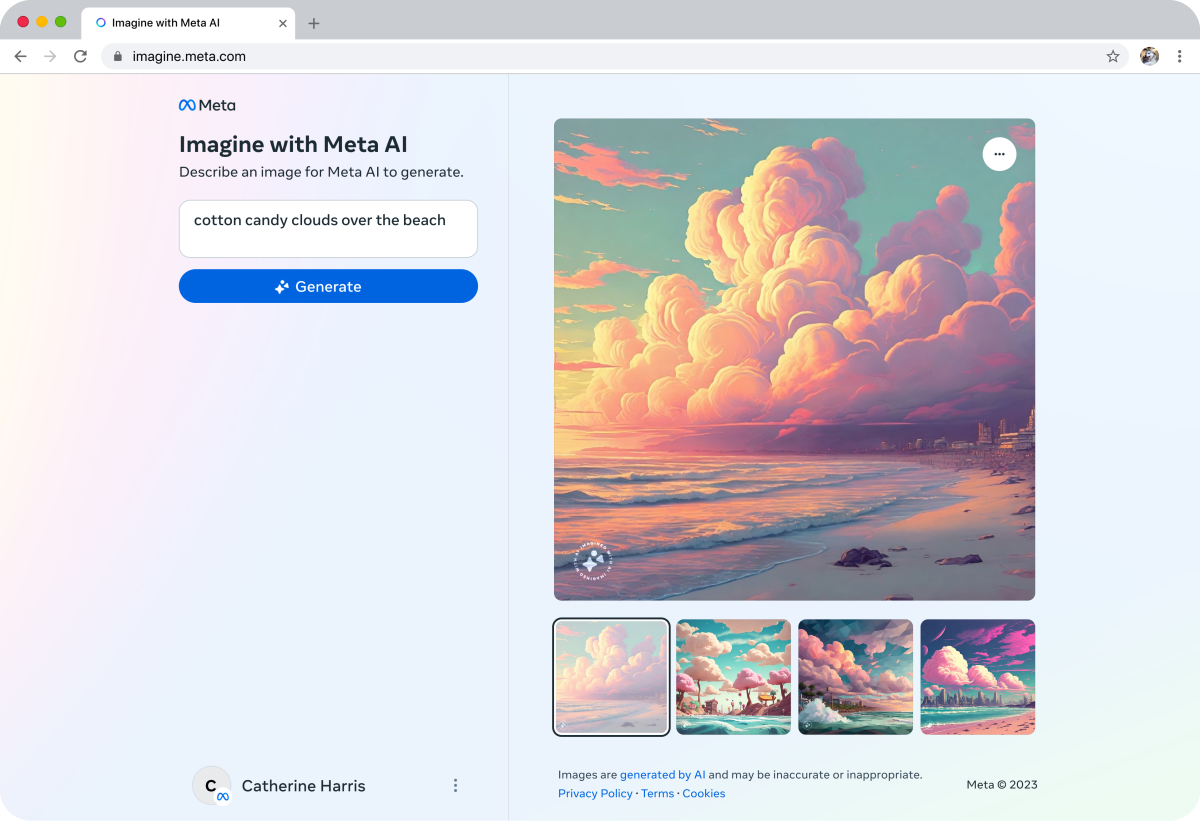
Meta launches a new AI-based image generator
Not wanting to lag behind Google‘s recent Gemini launch, Meta is introducing a new standalone AI-powered tool called Imagine with Meta. This web service allows users to create images by describing them in simple language.
Imagine with Meta works similarly to OpenAI’s DALL-E, Midjourney, and Stable Diffusion. Using Meta’s existing Emu image generation model, the service creates detailed images based on text queries. It is currently free (at least for now) for users in the US and generates four images per query.

“We’ve been delighted with the response from people using Meta AI’s Imagine to generate images from text to create engaging and creative content in chats. Today, we are making Imagine available outside of chats,” Meta said in a blog post. Designed for more entertaining and interactive interactions, this tool now allows you to create free images online as well.
In the past, Meta’s image generation tools have caused problems, such as the racially biased AI sticker generator. This makes me wonder if Imagine with Meta has security measures in place to avoid repeating past mistakes. Although the tool was not available for testing before the launch, we will closely monitor its implementation among users.
Initially, watermarks will not be available, but Meta promises to add them in the coming weeks to increase transparency and traceability. These watermarks will be invisible, created by an AI model and detected by the corresponding model. There is currently no information on whether the detection model will be made publicly available.
Watermarks are not new to generative art. The French startup Imatag offers such a tool, which, according to their claims, is resistant to resizing, cropping, editing, or compressing images.
Another firm, Steg.AI, uses an artificial intelligence model to apply watermarks that can withstand resizing and other edits. Microsoft and Google have already implemented AI-based watermarking standards and technologies, and Shutterstock and Midjourney have agreed to embed markers that indicate that their content was created using generative AI.
There is growing pressure on tech companies to more clearly indicate that works were created using artificial intelligence, especially in the wake of numerous Deepfakes from the Gaza war and images of child abuse created by AI that bypass filters.
Recently, China’s Cyberspace Administration issued rules requiring generative AI manufacturers to label the content they create, including text and image generators, without affecting user use. At a recent US Senate committee hearing, Senator Kyrsten Sinema (I-AZ) emphasized the need for transparency in the use of generative AI, in particular through the use of watermarks.

